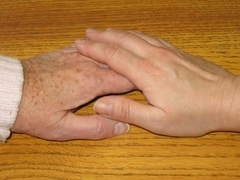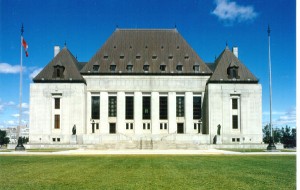 For those of you who have read our booklet about Personal Directives, or attended one of our seminars about this issue, you already know that in order to donate your organs you have to plan for it and you have to give written permission.
For those of you who have read our booklet about Personal Directives, or attended one of our seminars about this issue, you already know that in order to donate your organs you have to plan for it and you have to give written permission.
In other words, your Agent (that’s the person you’ve nominated to make your personal decisions for you once you no longer can) cannot consent to organ donation unless you have given him/her written instructions to do so.
Until yesterday, there were two ways to do that in Alberta: sign the back of your healthcare card and/or put the instructions in your Personal Directive.
This week, the Government of Alberta announced a new way – an online organ donation registry.
The Alberta Organ and Tissue Donation Registry is already up and running. To register you have to provide your health care number and your birth date. You will then be asked if you wish to donate all of your organs and tissues, or only certain ones.
But, it does not end there.
Once you have completed these first few steps, you will be asked to print off a legal consent form, which you must then sign, have witnessed, and mail in. This second part of the process is essentially meant to meet the criteria of needing written permission. Presumably, it is intended as a form of security to ensure that no one other than you made the choice for you (and possibly without your knowledge).
The question then arises, what happens if you don’t send in the legal consent? Presumably, when the time comes, your Agent will argue that filling in the online form should be enough. However, if there is another loved one who happens to oppose organ donation, s/he may try to argue that there has not been valid consent..
For example, a person who opposes the decision to donate could say that it was not you that filled in the online form, or that you no longer had capacity when you filled it in. What would happen next? Hard to say. Generally, the law likes evidence…and if you have people willing to fight the issue, the question of evidence will be of great importance. (Remember – at this point you will no longer be able to clarify).
So what can be done to maximize the chances of your wishes being carried out? A few ideas include:
- sign the back of your Alberta health care card (even though your wishes might be recorded elsewhere);
- register online and remember to mail in the consent form (and consider keeping a copy for your files); and
- write a Personal Directive (PD) and include your wishes in it as well. Including your wishes for organ donation in your PD has a few additional bonuses:
- In a PD you can add additional thoughts you have on the matter. For example, whether you want to donate your organs after brain death, or only after cardiac death.
- In a PD you can explain more about exactly what you want and why you want it. While you are writing the PD, you can have a family meeting and discuss these thoughts and wishes your with loved ones. All of this, will make it easier for your Agent when the time comes to actually consent to the harvesting of your organs.Remember, at the moment of the decision, your Agent probably won’t have either your health care card or the online form in his/her hand, and s/he may need proof to show to anyone opposing the decision. Having and hearing the additional information may also help family members to better understand your decisions (and perhaps make it less likely they’ll be opposed?)
So make those wishes clear. Your loved ones will be glad you did!



 Here at CPLEA, we get a lot of what we call “neighbour” queries. You know the kind: “his tree hangs over my fence and now I have rotting apples on my lawn”, “she painted the fence bright orange without asking me first”, “they throw their snow onto my driveway”. So, we have decided to turn some of the best of those questions into a group of blog posts we’ve called the “Neighbour Series”. This is the first post of that series.
Here at CPLEA, we get a lot of what we call “neighbour” queries. You know the kind: “his tree hangs over my fence and now I have rotting apples on my lawn”, “she painted the fence bright orange without asking me first”, “they throw their snow onto my driveway”. So, we have decided to turn some of the best of those questions into a group of blog posts we’ve called the “Neighbour Series”. This is the first post of that series.